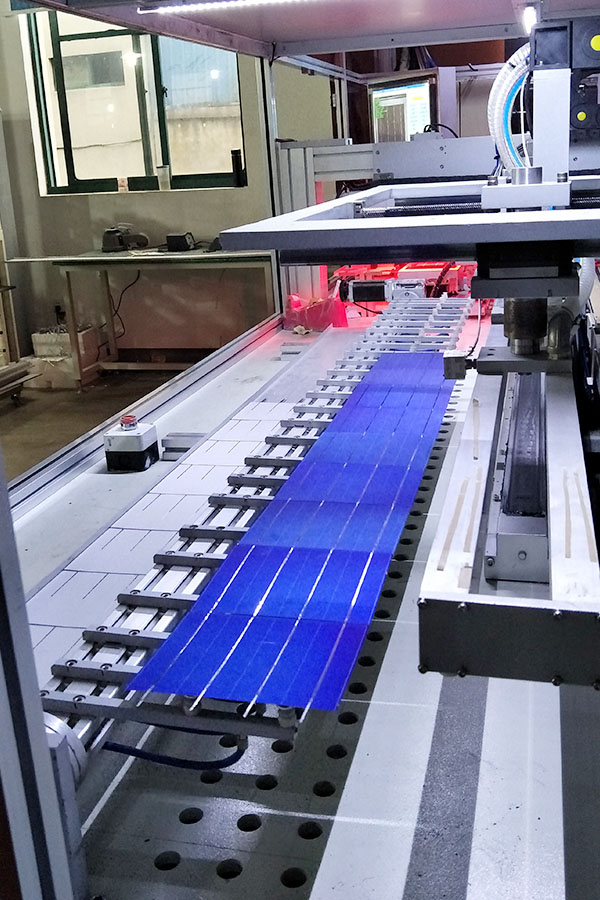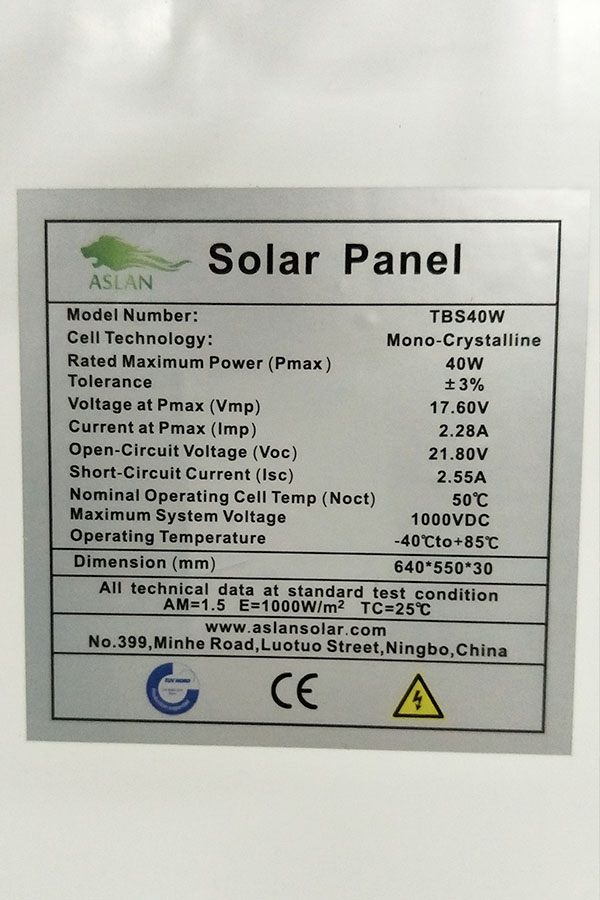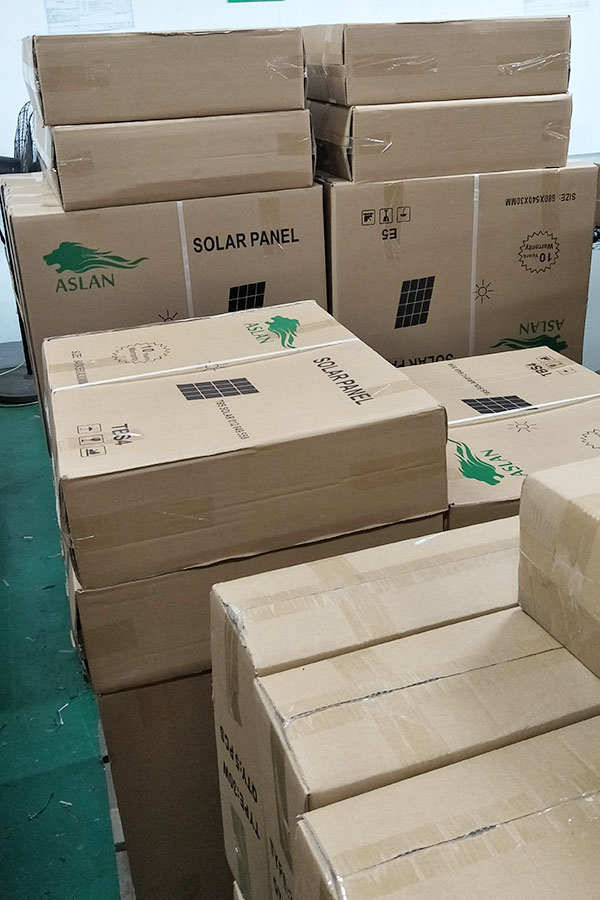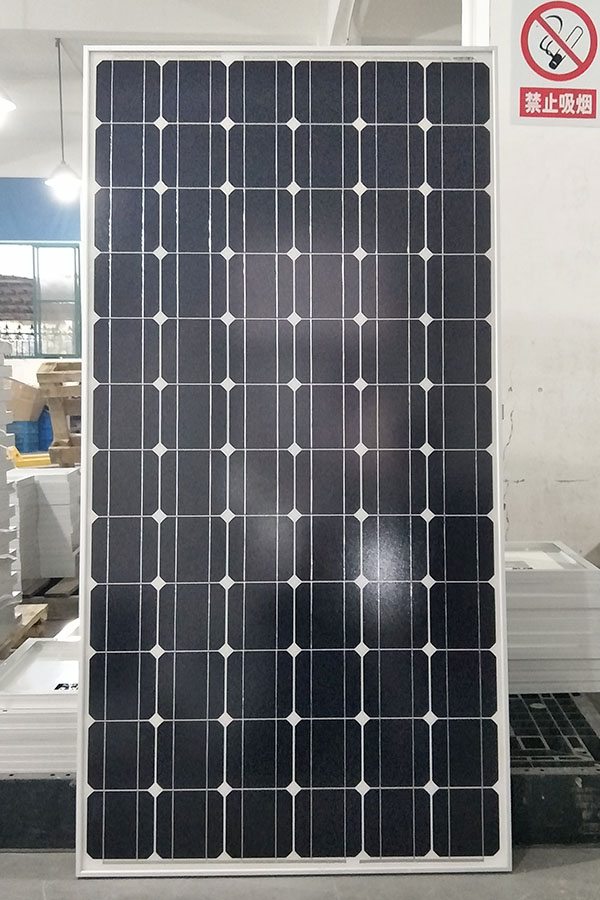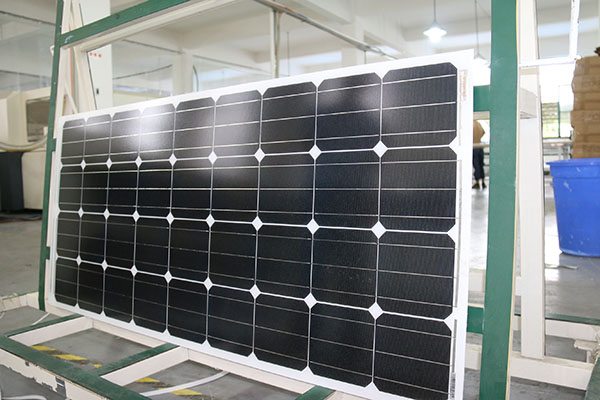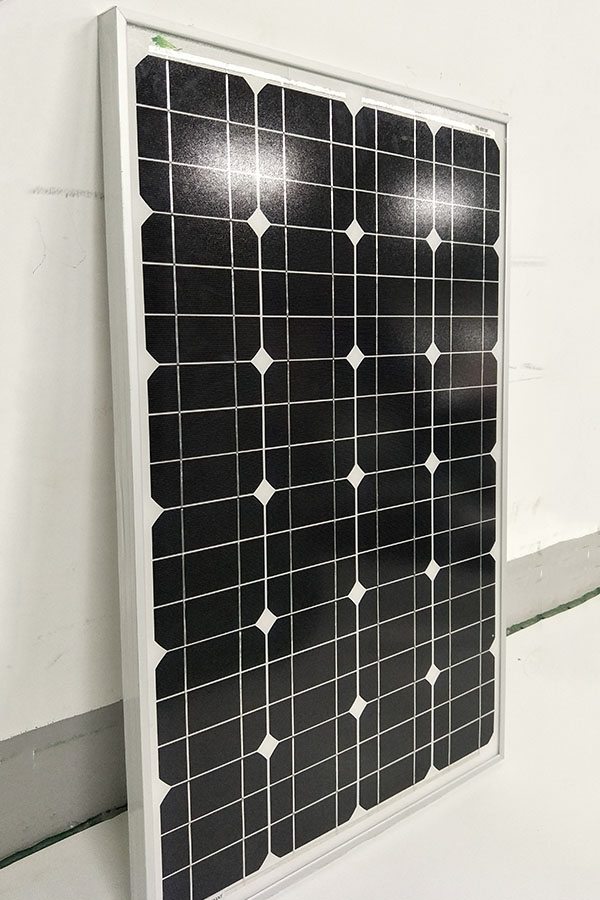Factory making Poly-crystalline Solar Panel 3W Export to New Delhi
Short Description:
Our company since its inception, always regards product quality as enterprise life, continuously improve production technology, improve product quality and continuously strengthen enterprise total quality management, in strict accordance with the national standard ISO 9001:2000 for Factory making Poly-crystalline Solar Panel 3W Export to New Delhi, If you are interested in any of our products or would like to discuss a custom order, please feel free to contact us.
Poly-crystalline Solar Panel 3W
Technical parameter
Maximum Power(W) 3W
Optimum Power Voltage(Vmp) 9V
Optimum Operating Current(Imp) 0.34A
Open Circuit Voltage(Voc) 10.8V
Short Circuit Current(Isc) 0.37A
Mechanical Characteristics
Cell Type Polycrystalline
No of Cell 18 (2x9pcs)
Dimensions 145x245x18mm
Weight 0.52KGS
Front Glass 3.2mm,High Transmission, Low Iron,Tempered Glass
Temperature and Coefficients
Operating Temperature(°C): -40°C ~ + 85°C
Maximum System Voltage: 600V(UL)/1000V(IEC) DC
Maximum Rated Current Series: 10A
Temperature Coefficients of Pmax: -0.435%
Temperature Coefficients of Voc: -0.35%
Temperature Coefficients of Isc: 0.043%
Nominal Operationg Cell Temperature (NOCT): 47+/-2°C
Materials of solar panel
1).Solar Cell——Polycrystalline solar cell 156*156mm
2).Front Glass——-3.2mm, high transmission, low iron, tempered glass
3).EVA——-excellent anti-aging EVA
4).TPT——-TPT hot seal made of flame resistance
5).Frame——anodized aluminum profile
6).Junction Box——-IP65 rated, high quality, with diode protection
Superiority: high quality anodized aluminum frame, high efficiency long life, easy installation, strong wind resistance, strong hail resistance.
Features
1. High cell efficiency with quality silicon materials for long term output stability
2. Strictly quality control ensure the stability and reliability, totally 23 QC procedures
3. High transmittance low iron tempered glass with enhanced stiffness and impact resistance
4. Both Poly-crystalline and Mono-crystalline
5. Excellent performance in harsh weather
6. Outstanding electrical performance under high temperature and low irradiance
Quality assurance testing
Thermal cycling test
Thermal shock test
Thermal/Freezing and high humidity cycling test
Electrical isolation test
Hail impact test
Mechanical, wind and twist loading test
Salt mist test
Light and water-exposure test
Moist carbon dioxide/sulphur dioxide
Complete video at: http://fora.tv/2010/04/21/Beyond_Sunny_Memories
Howard Clearfield, CTO of G24 Innovations, discusses potential applications of dye-sensitized solar cells. Since these cells operate indoors, Clearfield explains using the technology with indoor devices that draw standby power, like televisions, would take over 500 megawatts of electricity off the grid.
—–
Finding economic ways to capture and convert energy from our largest renewable energy source, the sun, is becoming more urgent as the worlds supply of fossil fuels vanishes. Now, the development of a new generation of solar cells might lead the way toward a better future.
Graetzel cells, named for Professor Michael Graetzel of the Ecole Polytechnique federale de Lausanne (EPFL) in Switzerland, are dye-sensitized solar cells that are thin, flexible, and come in many shapes and colors, allowing them to answer different functional needs. Inspired by plant photosynthesis, they use dyes to transform sunlight into electricity. – swissnex San Francisco
Howard M. Clearfield is the Chief Technology Officer at G24 Innovations, Ltd., a personalized solar energy start-up company specializing in flexible dye sensitized solar cells (DSSC). His solar energy experience includes positions at OptiSolar, Inc. as Director of Product Development, and at The Dow Chemical Company, where he installed at 210 kW solar farm that has produced over 750 MW-hr of renewable energy. Prior to entering the solar energy field, Clearfield was Global Leader of Technical Services and Applications Development for Dow’s LUMATION* Light-Emitting Polymers (LEPs). His group’s responsibilities included strategic marketing, customer technical support, and development/transfer of industrial ink processing techniques.
Nanotechnology celebrates 25 years in an interview with the author of one of the most cited and downloaded papers: ‘Silicon nanowire-based solar cells’. Published in 2008, it demonstrated the fabrication of silicon nanowire-based solar cells on silicon wafers and on multicrystalline silicon thin films on glass.
Silke Christiansen, from the Helmholtz-Center Berlin for Materials and Energy, talks about the motivation behind the paper and the impact that it has had on further research. The paper is available on line at http://iopscience.iop.org/0957-4484/19/29/295203/

